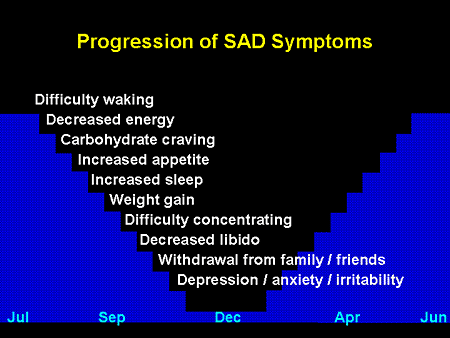Boost Your Winter Mood and Productivity with vitamin D or morning light
How to Prevent and Treat Seasonal Affective Disorder Mercola, Dec 2019
 --- 1. Vitamin D vs broad spectrum phototherapy in the treatment of seasonal affective disorder.- 1999That study was referenced by 340 studies as of Dec 2019
--- 1. Vitamin D vs broad spectrum phototherapy in the treatment of seasonal affective disorder.- 1999That study was referenced by 340 studies as of Dec 2019Highlights
Seasonal affective disorder (SAD) is a form of depression that occurs seasonally, typically ramping up in the fall and winter months and disappearing come spring
Helpful treatments include optimizing your vitamin D and omega-3 levels, light therapy (including blue light exposure in the morning, but not later in the day), optimizing your sleep, the Emotional Freedom Techniques and exercise
Your health and mood are intricately tied to exposure to sunlight. For example, your serotonin levels (the hormone typically associated with elevating your mood) rise when you're exposed to bright light. Your melatonin level also rises and falls (inversely) with light and darkness
Vitamin D deficiency is very common, and should be a top consideration when you’re looking for a solution to flagging mood and energy — especially if it occurs during fall and winter months
While light therapy can take up to four weeks before you notice improvement, it was shown to be more effective than antidepressants for moderate to severe depression in a 2015 study
